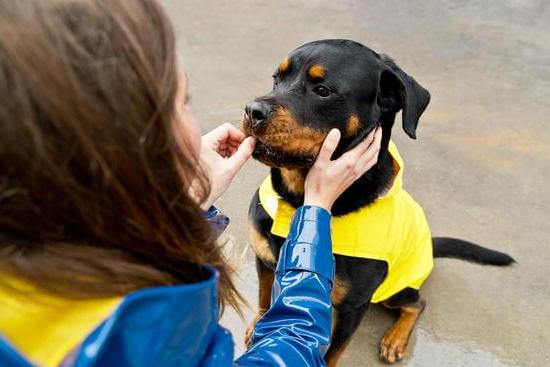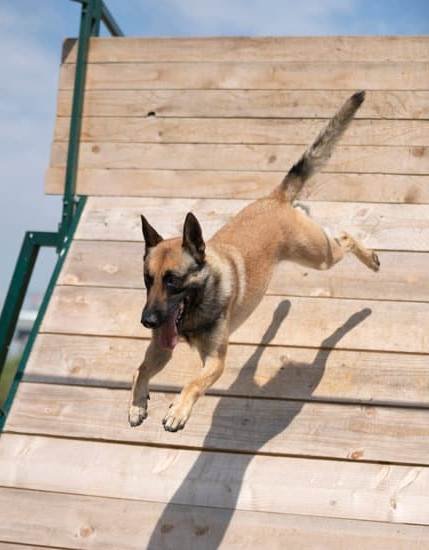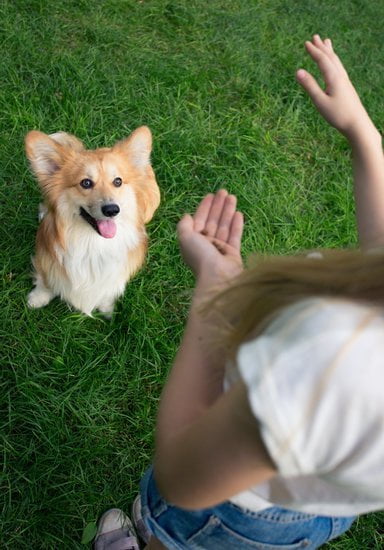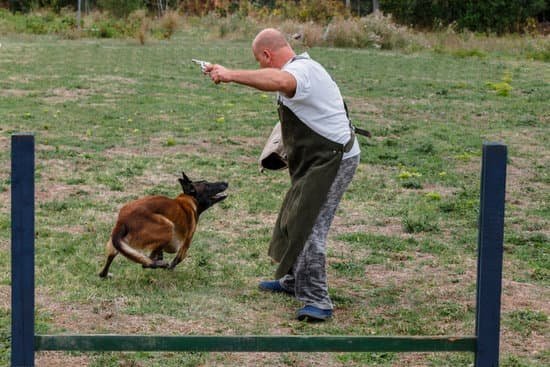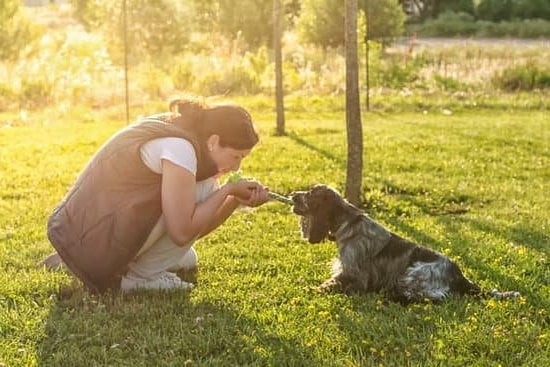Training your dog to use the bathroom in one spot is a crucial aspect of housebreaking and creating a consistent routine. By establishing a designated area for your dog to do their business, you not only make clean-up easier but also provide numerous benefits for both you and your furry friend.
In this article, we will explore the importance of training your dog to use the bathroom in one spot, discuss understanding your dog’s bathroom behavior, selecting the perfect spot for their bathroom area, establishing a consistent routine, using positive reinforcement techniques, introducing cues or commands for bathroom time, dealing with accidents and setbacks, troubleshooting common challenges, and ultimately celebrating success.
Housebreaking a dog can be a challenging task that requires patience and consistency. Having a designated spot for them to do their business helps establish boundaries and prevents confusion.
Instead of having your dog eliminate waste all over the house or yard, training them to use one specific area makes clean-up more manageable and reduces the chance of accidents occurring where they shouldn’t. Whether you are living in an apartment or have access to outdoor space, teaching your dog to use the bathroom in one spot is beneficial for maintaining cleanliness and preventing unwanted odors.
Understanding your dog’s bathroom behavior is essential when it comes to successful training. Dogs have a natural instinct to mark their territory by urinating or defecating in specific areas. By recognizing these behaviors and signals that indicate when they need to go, you can effectively guide them towards the designated bathroom spot. Learning how to interpret these signs will not only aid in avoiding accidents but also strengthen the bond between you and your four-legged companion.
In selecting the perfect spot for your dog’s bathroom area, factors such as accessibility and privacy are crucial considerations. Whether it’s an outdoor patch of grass or an indoor training pad, choosing an appropriate location ensures convenience for both you and your pet. Providing them with privacy encourages comfort while doing their business.
Establishing consistency is key when training your dog to use the bathroom in one spot. A regular schedule for bathroom breaks will help them develop a routine and prevent accidents. The frequency of these breaks is determined by factors such as the age, breed, and size of your dog. By following a consistent schedule, you are setting your dog up for success in mastering their bathroom habits.
Overall, training your dog to use the bathroom in one spot requires time, effort, and patience. In the following sections of this article, we will delve deeper into understanding your dog’s natural behavior, selecting an ideal spot, establishing a consistent routine, using positive reinforcement techniques, introducing cues or commands, handling accidents and setbacks, troubleshooting common challenges, and celebrating success in maintaining this desired behavior.
With dedication and perseverance, you can successfully train your pooch to have proper bathroom etiquette while creating a harmonious living environment for both of you.
Understanding Your Dog’s Bathroom Behavior
When it comes to training your dog to use the bathroom in one spot, it’s essential to have a good understanding of their bathroom behavior. Dogs naturally have an instinct to mark their territory and eliminate waste, which can vary depending on factors such as breed, age, and health. By taking the time to understand your dog’s bathroom behavior, you’ll be better equipped to develop an effective training plan.
One important aspect of understanding your dog’s bathroom behavior is recognizing the signs that indicate when they need to go. These signs can differ from one dog to another but may include restlessness, sniffing around the house or outdoor area, pacing, whining, or even scratching at the door. By being observant and paying attention to these cues, you can ensure that you take your dog to their designated bathroom spot in a timely manner.
To help track your dog’s bathroom habits and patterns, consider keeping a diary or log. Note down the times when they usually go outside or use the indoor training pad. Over time, you may start noticing patterns emerging and be able to establish a routine based on your findings.
Once you have a clear understanding of your dog’s bathroom behavior and their cues for needing to go, you can create a successful training plan that takes into account their individual needs and preferences. Remember that consistency and patience are key throughout this process as dogs learn best through repetition and positive reinforcement. With dedication and understanding, you’ll be well on your way to training your dog to use the bathroom in one spot consistently.
Selecting the Perfect Spot for Your Dog’s Bathroom Area
The Ideal Location for Your Dog’s Bathroom Spot
When selecting the perfect spot for your dog’s bathroom area, there are a few factors to consider. First and foremost, it is important to choose an area that is easily accessible for both you and your dog. If you have a backyard, consider designating a specific section that is conveniently located near your home’s entrance. This will make it easier for you to bring your dog outside whenever they need to go.
If you live in an apartment or don’t have access to outdoor space, indoor training pads can be a great alternative. Look for an area in your home that is easy to clean, such as the laundry room or bathroom. This way, accidents can be quickly and easily taken care of without causing damage to other parts of your home.
The Importance of Accessibility and Privacy
In addition to choosing a convenient location, it is also essential to consider your dog’s privacy when selecting their bathroom spot. Dogs prefer areas where they feel safe and secure while doing their business. Ensure that the chosen spot provides some level of privacy, whether it’s through natural barriers like shrubs or by creating barriers using training aids or fencing.
At the same time, it is important to strike a balance between privacy and accessibility. You don’t want the designated bathroom spot to be too hidden or difficult for your dog to find when they need it. Make sure that the area is clearly marked with cues such as signs or scent markers so that your pup knows exactly where they should go.
By carefully considering accessibility and privacy when selecting the perfect spot for your dog’s bathroom area, you will create an environment that supports successful potty training and reinforces consistent behavior.
Tips for Maintaining Your Dog’s Bathroom Area
Once you have selected the perfect spot for your dog’s bathroom area, it is crucial to maintain cleanliness and hygiene. Regularly clean up any waste in the designated spot to prevent odors and discourage your dog from using other areas of your home as a bathroom. Use pet-friendly cleaners to ensure that the area remains safe for your dog.
It’s also important to periodically inspect the area for any signs of damage or wear and tear, especially if you have an outdoor bathroom spot. Repair or replace any fencing, training aids, or other structures that may have deteriorated over time to maintain a secure and functional bathroom space for your dog.
Establishing a Consistent Routine for Bathroom Breaks
One of the key aspects of training your dog to use the bathroom in one spot is establishing a consistent routine for bathroom breaks. Dogs thrive on routine and establishing a regular schedule will help them learn when and where they should go to the bathroom. Here are some tips to help you establish a consistent routine for bathroom breaks:
Determining the Appropriate Frequency
The frequency of bathroom breaks will depend on your dog’s age, breed, and size. Puppies and smaller breeds have smaller bladders and may need more frequent breaks compared to larger dogs. As a general guideline, puppies should be given the opportunity to go outside or use their designated spot every 2-3 hours. Adult dogs can typically hold it for longer periods, but it is still important to provide regular opportunities for them to relieve themselves.
Choosing Specific Times for Bathroom Breaks
It is important to choose specific times throughout the day for your dog’s bathroom breaks. This could include first thing in the morning, right before bedtime, after meals, and after playtime or exercise sessions. By consistently providing these opportunities at specific times, you are helping your dog develop a routine and anticipate when they will have the chance to go outside or use their designated spot.
Using Environmental Cues
In addition to specific times, you can also use environmental cues to signal bathroom breaks to your dog. For example, if you always take your dog out through a certain door or put them on a leash before going outside, these actions can serve as cues that it’s time for them to eliminate waste.
The Importance of Supervision
When establishing a consistent routine for bathroom breaks, it is crucial that you supervise your dog during these times. This way, you can reward them immediately when they eliminate waste in the designated spot and prevent accidents from occurring elsewhere. Be patient and wait for them to finish before giving praise and rewards.
By following these tips and establishing a consistent routine for bathroom breaks, you can significantly improve your dog’s housebreaking training. Remember to be patient and consistent in your approach, as it may take some time for your dog to adjust to the new routine. With perseverance, you will soon have a well-trained dog that consistently uses the bathroom in one spot.
Using Positive Reinforcement to Encourage Bathroom Behavior in One Spot
Positive reinforcement is a powerful tool when it comes to training dogs, and it can be especially effective in encouraging bathroom behavior in one spot. By using rewards and praise, you can create a positive association for your dog with their designated bathroom area, making them more likely to consistently use that spot.
One technique for using positive reinforcement is to reward your dog immediately after they successfully use the designated bathroom spot. This can be done with treats, verbal praise, or a combination of both.
It’s important to make the reward highly desirable for your dog, so they associate it with the desired behavior. Additionally, consistency is key in this process – make sure to give the reward every time your dog uses the bathroom in the right spot, at least during the initial stages of training.
Another technique is clicker training. The clicker acts as a marker for good behavior and allows for precise timing when providing rewards. To start clicker training your dog to use the bathroom in one spot, follow these steps:
- Introduce your dog to the clicker by associating it with a treat and clicking immediately before giving them the treat.
- Take your dog to their designated bathroom spot and wait for them to eliminate waste.
- As soon as they start going in the right place, click and then provide them with a high-value treat.
- Repeat this process consistently during potty breaks until they understand that going in that specific spot will result in rewards.
It’s also essential to avoid punishment or negative reinforcement during this process. Punishing or scolding your dog for going in the wrong place can create confusion and anxiety, making it more challenging for them to learn where they should go. Instead, focus on rewarding and praising the desired behavior while redirecting them gently if they start going off course.
Implementing positive reinforcement techniques takes time and patience but can yield long-lasting results. Keep in mind that every dog is different, so it may take some experimentation to find the most effective rewards and praise for your specific dog. With consistency and positive reinforcement, you can successfully train your dog to use the bathroom in one spot.
| Technique | Description |
|---|---|
| Reward after success | Provide treats or verbal praise immediately after your dog uses the designated bathroom spot correctly. |
| Clicker training | Use a clicker as a marker for good behavior and provide rewards after clicking when your dog goes in the right spot. |
Introducing and Implementing a Cue or Command for Bathroom Time
Teaching your dog a specific cue or command for bathroom time can greatly enhance the training process and further reinforce the behavior of using the designated spot consistently. By associating a verbal or physical cue with the action of going to the bathroom in one spot, you can effectively communicate your expectations to your dog and help them understand what you want them to do.
To introduce and implement a cue or command for bathroom time, follow these step-by-step instructions:
- Choose a specific word or phrase: Select a word or phrase that is easy to remember and distinct from other commands or cues that your dog already knows. Examples can include “Go potty,” “Do your business,” or “Go pee.”
- Use the cue consistently: As soon as you notice signs that indicate your dog needs to go to the bathroom (such as sniffing around, circling, or whining), say the chosen cue in a clear and firm tone. Repeat it several times to reinforce its association with the desired behavior.
- Reinforce with praise and rewards: When your dog successfully goes to the bathroom in the designated spot after hearing the cue, immediately praise them enthusiastically and offer a treat or reward as positive reinforcement. This will strengthen the connection between the cue, the behavior, and the positive outcome.
- Repeat frequently during training sessions: Practice using the cue during regular bathroom breaks throughout the day. Be consistent in saying it before your dog begins eliminating waste so that they learn to associate it directly with that action.
It may take some time for your dog to fully understand and respond consistently to the cue or command. Be patient, stay consistent, and continue reinforcing their successful behavior with rewards and praise.
By introducing a specific cue or command for bathroom time, you can efficiently communicate with your dog and improve their understanding of where they should eliminate waste. This added step in training will further solidify their behavior and ensure long-term success in using the bathroom in one spot.
| Step | Description |
|---|---|
| Choose a specific word or phrase | Select a word or phrase that is easy to remember and distinct from other commands or cues that your dog already knows. |
| Use the cue consistently | As soon as you notice signs that indicate your dog needs to go to the bathroom, say the chosen cue in a clear and firm tone. Repeat it several times to reinforce its association with the desired behavior. |
| Reinforce with praise and rewards | When your dog successfully goes to the bathroom in the designated spot after hearing the cue, immediately praise them enthusiastically and offer a treat or reward as positive reinforcement. |
Dealing with Accidents and Strategies for Success
Accidents happen, especially during the training process of teaching your dog to use the bathroom in one spot. It’s important not to get discouraged or punish your dog for accidents, as this can hinder their progress and create a negative association with using the designated area. Instead, it’s crucial to handle accidents calmly and implement effective strategies to ensure success.
When accidents occur, it’s important to clean up thoroughly using an enzymatic cleaner specifically designed for pet messes. These cleaners break down the enzymes in urine and eliminate any lingering odors that may attract your dog back to the same spot. Avoid using ammonia-based cleaners, as they contain components that resemble the smell of urine and can actually encourage repeated accidents.
In addition to thorough cleaning, it’s essential to reinforce the desired behavior by rewarding your dog when they use the designated bathroom spot. Use positive reinforcement techniques such as treats, praise, and petting immediately after they have successfully eliminated waste in the correct area. This will help them associate using that particular spot with positive rewards.
If you notice your dog consistently having accidents in areas other than the designated spot, it may be necessary to restrict their access to those areas temporarily. This can be done by closing doors or utilizing baby gates to block off certain rooms until they consistently demonstrate appropriate bathroom behavior.
It’s also essential to evaluate your routine and ensure you are providing enough opportunities for bathroom breaks. If accidents persist despite regular potty breaks, consider increasing the frequency of these breaks or adjusting the timing based on cues from your dog. Consistency is key in reinforcing the desired behavior.
By taking these strategies into account when handling accidents and setbacks during the training process, you will set yourself and your furry friend up for success in achieving consistent bathroom habits in one designated spot.
Troubleshooting Common Challenges and Issues
While training your dog to use the bathroom in one spot can be a rewarding process, it is not without its challenges. This section will address some common challenges and issues that may arise during the training process and provide tips and techniques for overcoming them.
One common challenge that many dog owners face is when their dogs refuse to use the designated bathroom spot. This can happen for a variety of reasons, such as fear or discomfort with the chosen location.
In this case, it’s important to evaluate whether there may be any factors making your dog reluctant to use the spot, such as noise, distractions, or an uncomfortable surface. Consider making adjustments to address these concerns and make the area more appealing to your dog.
Separation anxiety is another issue that can affect a dog’s ability to consistently use a designated bathroom spot. Some dogs may become anxious when left alone in certain areas of the home, causing them to have accidents or avoid using the designated spot altogether.
To combat this issue, it’s important to gradually acclimate your dog to being alone in the chosen area by slowly increasing their time spent there. You can also create positive associations by providing toys or treats in that space.
In addition to these challenges, accidents are bound to happen during the training process. It’s crucial not to get discouraged when accidents occur and instead focus on reinforcing the desired behavior going forward. When accidents do happen, clean up thoroughly using an enzymatic cleaner specifically designed for pet messes. This will help eliminate any lingering odor that might attract your dog back to that spot.
Remember that troubleshooting challenges and issues during training is a normal part of the process. Consistency and patience are key when training your dog to use the bathroom in one spot. By understanding common challenges and implementing effective strategies for success, you can achieve your goal of having a well-trained dog who consistently uses their designated bathroom area.
Conclusion
Training your dog to use the bathroom in one spot is not an easy task, but with patience and consistency, it can be achieved. Throughout this article, we have delved into the importance of having a designated spot for your dog to eliminate waste and the challenges that come with housebreaking a dog. We have also discussed various strategies and techniques for establishing a consistent routine, using positive reinforcement, and introducing cues or commands for bathroom time.
As you embark on this journey of training your dog, it is important to celebrate every small success along the way. Each time your furry friend successfully uses the designated spot, acknowledge their accomplishment with praise and rewards. This positive reinforcement will reinforce the desired behavior and provide motivation for them to continue using that spot consistently.
However, it is vital to remember that training takes time and patience. There may be setbacks and accidents along the way, but it is crucial not to get discouraged. Consistency is key in reinforcing the habits you want your pet to develop. Stick to the established routine and continue practicing the techniques outlined in this article.
Remember that training your dog to use the bathroom in one spot requires ongoing effort even after they have learned the behavior. Regular reinforcement and practice are essential to maintain their understanding of where they should go. By remaining patient and consistent in your approach, you can achieve long-term success in housebreaking your furry friend.
In conclusion, training your dog to use the bathroom in one spot may require some initial effort and troubleshooting common issues that arise during the process. However, by celebrating successes along the way and emphasizing patience and consistency as crucial elements of effective training, you can establish a routine that will stay with your furry friend for years to come.
Frequently Asked Questions
How do I get my dog to pee and poop in the same spot?
To train your dog to pee and poop in the same spot, consistency is key. Start by choosing a designated area in your yard or outside your house where you want your dog to go. Take your dog to this spot every time they need to relieve themselves, using consistent verbal cues such as “go potty” or “do your business.”
When they use that spot, be sure to praise them and offer a reward immediately after they finish. Consistency and positive reinforcement will help reinforce the idea that this particular spot is where they should go potty.
How do I get my dog to pee in one place?
Training your dog to pee in one specific place can be done using similar techniques as mentioned above, but with some slight variations. Again, choose a designated spot for them to pee, ideally a small area covered with dirt or grass that is away from high-traffic areas. Take your dog there consistently whenever they need to urinate, using the same command like “pee” or “go pee.”
Give them praise and rewards for successfully peeing in that specific area. You may also consider marking that area with their urine scent, either by introducing a previously soiled piece of cloth or using an enzymatic spray designed for this purpose.
Do dogs go to the bathroom in the same spot?
Generally speaking, dogs do not naturally go to the bathroom in the same exact spot every time. However, through consistent training and conditioning, it is possible to teach dogs to do their business in a specific location consistently.
By using positive reinforcement techniques like rewards and praise when they go in the desired spot, you can encourage them to develop a preference for using that particular area over time. Remember that patience and consistency are vital when trying to establish this habit for your dog.

Welcome to the blog! I am a professional dog trainer and have been working with dogs for many years. In this blog, I will be discussing various topics related to dog training, including tips, tricks, and advice. I hope you find this information helpful and informative. Thanks for reading!

